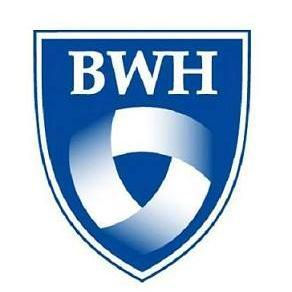Request Demo
Last update 05 Oct 2025

The Broad Institute, Inc.
Last update 05 Oct 2025
Overview
Tags
Neoplasms
Other Diseases
Nervous System Diseases
Small molecule drug
Oligonucleotide
AAV based gene therapy
Disease domain score
A glimpse into the focused therapeutic areas
No Data
Technology Platform
Most used technologies in drug development
No Data
Targets
Most frequently developed targets
No Data
| Top 5 Drug Type | Count |
|---|---|
| Small molecule drug | 21 |
| AAV based gene therapy | 3 |
| Chemical drugs | 2 |
| Proteolysis-targeting chimeras (PROTAC) | 2 |
| Bispecific antibody | 2 |
Related
38
Drugs associated with The Broad Institute, Inc.Target |
Mechanism CDK7 inhibitors [+2] |
Active Org. |
Originator Org. |
Active Indication |
Inactive Indication- |
Drug Highest PhasePhase 2 |
First Approval Ctry. / Loc.- |
First Approval Date- |
Target- |
Mechanism Immunostimulants |
Active Org. |
Originator Org. |
Active Indication |
Inactive Indication |
Drug Highest PhasePhase 1 |
First Approval Ctry. / Loc.- |
First Approval Date- |
Target |
Mechanism DNMT3B inhibitors [+1] |
Active Org. |
Originator Org. |
Active Indication |
Inactive Indication- |
Drug Highest PhasePreclinical |
First Approval Ctry. / Loc.- |
First Approval Date- |
22
Clinical Trials associated with The Broad Institute, Inc.NCT07112287
MyeloGen: Germline Testing for Predisposition to Myeloid Malignancies
The goal of this research study is to evaluate the feasibility of germline genetic testing using the investigational MyeloGen Gene Panel in adult participants diagnosed with myeloid malignancies.
Start Date01 Feb 2026 |
Sponsor / Collaborator |
NCT06691217
Effects of IL-1 Beta Inhibition on Vascular Inflammation in TET2 Clonal Hematopoiesis
The primary goal of this clinical trial is to test the hypothesis that the drug canakinumab (anti-IL-1B monoclonal antibody) decreases vascular inflammation when used by people with a history of coronary artery disease, including those with and without clonal hematopoiesis driven by mutations in TET2.
Start Date01 Nov 2025 |
Sponsor / Collaborator |
NCT05962372
Culturally Adapted Dietary Clinical Trial in PR: Puerto Rico Evaluation of a Culturally Informed Sustainable Intervention for Optimal Nutrition (PRECISION)
This project will determine whether a diet culturally adapted to adults in Puerto Rico can effectively decrease cardiometabolic risk factors. This will help define a culturally-appropriate, feasible, and sustainable diet intervention aimed at reducing cardiovascular, type 2 diabetes, and obesity outcomes.
Start Date02 May 2024 |
Sponsor / Collaborator |
100 Clinical Results associated with The Broad Institute, Inc.
Login to view more data
0 Patents (Medical) associated with The Broad Institute, Inc.
Login to view more data
9,928
Literatures (Medical) associated with The Broad Institute, Inc.01 Jan 2026·HGG advances
Pathway-specific polygenic scores substantially increase the discovery of gene-adiposity interactions impacting liver biomarkers
Article
Author: Durvasula, Arun ; Gauderman, W James ; Chasman, Daniel I ; Westerman, Kenneth E
Polygenic scores (PGSs) are appealing for detecting gene-environment interactions due to the aggregation of genetic effects and reduced multiple testing burden compared to single-variant genome-wide interaction studies (GWISs). However, standard PGSs reflect many different biological mechanisms, limiting interpretation and potentially diluting pathway-specific interaction signals. Previous work has uncovered a significant genome-wide PGS×Adiposity signal impacting liver function, but there is an opportunity for additional and more interpretable discoveries. Here, we leveraged pathway-specific polygenic scores (pPGSs) to discover mechanism-specific gene-adiposity interactions. We tested for body mass index (BMI) interactions impacting three liver-related biomarkers (ALT, AST, and GGT) using (1) a standard, genome-wide PGS, (2) an array of pPGSs containing variant subsets derived from KEGG pathways, and (3) a GWIS. For ALT, we identified 49 significant pPGS×BMI interactions at a Bonferroni corrected p < 2.7 × 10-4, 80% of which were not explained by genes close to the 8 loci found in the associated GWIS. Across all biomarkers, we found interactions with 83 unique pPGSs. We tested alternate pathway collections (hallmark, KEGG Medicus), finding that the choice of pathway collection strongly impacts discovery. Our findings reinforced known biology (e.g., glycerolipid metabolism and hepatic lipid export affecting ALT release) and captured additional phenomena (e.g., actin cytoskeleton remodeling-associated variants alter the liver's robustness to lipid mechanical stress and thus GGT release). These results support the use of pPGSs for well powered and interpretable discovery of pPGS×E interactions with adiposity-related exposures for liver biomarkers and motivate future studies using a broader collection of exposures and outcomes.
01 Jan 2026·EXPERIMENTAL NEUROLOGY
Animal models of Chiari malformation types 1 and 2: Mechanistic insights and translational challenges
Review
Author: Allington, Garrett ; Kahle, Kristopher T ; Dennis, Evan ; Alper, Seth L ; Li, Qiang ; Mekbib, Kedous Y ; Duy, Phan Q ; Kundishora, Adam J ; Fan, Baojian ; Davalan, William ; Mehta, Neel H ; Hale, Andrew T ; Muñoz, William ; Butler, William E
Chiari malformation (CM) types 1 and 2 are common congenital hindbrain disorders characterized by varying degrees of cerebellar herniation and association with neural tube defects. Knowledge of CM pathogenesis has thus far relied on preclinical animal models. Here, we provide a comprehensive review of animal models (genetic, teratogen-induced, surgical, and spontaneous) of CM1 and CM2, highlighting their construct validity, pathophysiological insights, and translational relevance. Genetic models exhibit defects in cranial base development, cerebrospinal fluid (CSF) flow, and neural tube closure. Teratogenic and surgical models have been informative for understanding the consequences of CSF leakage and validating prenatal treatments, especially in fetal sheep and chick embryos. Spontaneous models in dogs, cattle, and primates have offered complementary insights but the heterogeneity arising from species-specific differences obscures further understanding. Despite these advances, translational challenges persist, including species-specific differences in skull anatomy, CSF physiology, and symptomatology. We highlight the need for a patient-first approach, emphasizing the translational importance of large-scale gene discovery research in human patients to inform and prioritize dowstream functional investigations in animal models to enhance mechanistic understanding and support the development of etiology-specific therapies for CM.
31 Dec 2025·Gut Microbes
Long-term yogurt intake and colorectal cancer incidence subclassified by
Bifidobacterium
abundance in tumor
Article
Author: Matsuda, Kosuke ; Song, Mingyang ; Liu, Li ; Zhong, Yuxue ; Kawamura, Hidetaka ; Ogino, Shuji ; Zhang, Xuehong ; Giannakis, Marios ; Chan, Andrew T ; Arima, Kota ; Mizuno, Hiroki ; Hamada, Tsuyoshi ; Yao, Qian ; Garrett, Wendy S ; Kosumi, Keisuke ; Mima, Kosuke ; Ugai, Satoko ; Ugai, Tomotaka ; Giovannucci, Edward L ; Okadome, Kazuo
Evidence suggests a tumor-suppressive effect of the intake of yogurt, which typically contains Bifidobacterium. We hypothesized that long-term yogurt intake might be associated with colorectal cancer incidence differentially by tumor subgroups according to the amount of tissue Bifidobacterium. We utilized the prospective cohort incident-tumor biobank method and resources of two prospective cohort studies. Inverse probability weighted multivariable Cox proportional hazards regression was used to assess differential associations of yogurt intake with the incidence of colorectal carcinomas subclassified by the abundance of tumor tissue Bifidobacterium. During follow-up of 132,056 individuals, we documented 3,079 incident colorectal cancer cases, including 1,121 with available tissue Bifidobacterium data. The association between long-term yogurt intake and colorectal cancer incidence differed by Bifidobacterium abundance (P heterogeneity = 0.0002). Multivariable-adjusted hazard ratios (HRs) (with 95% confidence intervals) in individuals who consumed ≥2 servings/week (vs. <1 serving/month) of yogurt were 0.80 (0.50-1.28) for Bifidobacterium-positive tumor and 1.09 (0.81-1.46) for Bifidobacterium-negative tumor. This differential association was also observed in a subgroup analysis of proximal colon cancer (P heterogeneity = 0.018). Long-term yogurt intake may be differentially associated with the incidence of proximal colon cancer according to Bifidobacterium abundance, suggesting the antitumor effect of yogurt intake on the specific tumor subgroup.
528
News (Medical) associated with The Broad Institute, Inc.25 Sep 2025
SKILLMAN, N.J.--(BUSINESS WIRE)--4M Therapeutics Inc. (4MTx), an early-stage biotechnology company developing treatments for neuropsychiatric and neurodegenerative diseases, today announced the appointment of Edward Scolnick, M.D., as Senior Scientific Advisor.
By leveraging lithium as a benchmark and pCRMP2 as a biomarker, 4MTx has the potential to address the key limitations of marketed therapies and make a significant impact in the field of bipolar disorder
“We are honored to welcome Dr. Scolnick as Senior Scientific Advisor. Ed is one of the most respected minds in neuroscience and drug development, and his groundbreaking work has provided critical insights into the development of novel therapies for the treatment of psychiatric disorders, including bipolar disorder,” said Pablo Lapuerta, M.D., Chief Executive Officer of 4MTx. “His guidance and expertise will be invaluable as we work to advance our pipeline of neuropsychiatric therapies into the clinic and bring much-needed innovation to patients.”
“I am delighted to join the 4MTx team. I have been following the Company closely, and I have previously collaborated in this field with 4MTx scientific co-founder Dr. Stephen Haggarty,” said Dr. Scolnick. “By leveraging lithium as a benchmark and pCRMP2 as a biomarker, 4MTx has the potential to address the key limitations of marketed therapies and make a significant impact in the field of bipolar disorder. I look forward to working alongside the team to advance this important work.”
Dr. Scolnick has a strong interest in neuroscience and founded the Stanley Center for Psychiatric Research at the Broad Institute in 2007, where he currently serves as a core member emeritus of the Broad Institute of MIT and Harvard and chief scientist emeritus at the Stanley Center for Psychiatric Research. During his tenure there, he published several articles on the discovery of GSK3β inhibitors with 4MTx scientific co-founder Dr. Stephen Haggarty. Prior to that, Dr. Scolnick spent over 20 years at Merck, serving as president of Merck Research Laboratories; executive vice president for science and technology at Merck & Co.; executive director and vice president in the department of virus and cell biology and senior vice president for basic research at Merck Research Laboratories. He led the development and introduction of 29 new medicines and vaccines. Prior to joining Merck, he worked at the National Cancer Institute and at the National Heart Institute.
Dr. Scolnick is an elected member of the National Academy of Sciences, the American Academy of Arts and Sciences, and the Institute of Medicine. He served on the Board of Directors of Merck & Co. from 1997 to 2002; the Board of Councilors for the National Institute of Mental Health from 1998 to 2002; and the FDA Science Board from 2000 to 2002.
Dr. Scolnick holds an M.D. from Harvard Medical School and an A.B. from Harvard College.
About 4M Therapeutics Inc.
4M Therapeutics Inc. (4MTx) is advancing treatments for neuropsychiatric and neurodegenerative conditions. The Company focuses on targets for a wide array of disorders and indications. 4MTx applies unique insights from its living human brain cell platform, which was developed through a collaboration between Harvard, MIT, and the University of Washington to identify and design more effective and safer therapeutics. The Company’s pipeline includes potential breakthrough treatments for bipolar mania, agitation in Alzheimer’s disease, neurodegeneration, and other CNS disorders. For more information, visit www.4mtx.net.
Executive Change
23 Sep 2025
NORTH BETHESDA, Md.--(BUSINESS WIRE)--The Foundation for the National Institutes of Health (FNIH) will award the inaugural Montrone-Seigel Prize in Biomedical Sciences to molecular biologist David Liu, PhD. He and his team have developed innovative gene editing technologies that are being used worldwide to study and treat genetic diseases, including in at least 23 clinical trials targeting cancer, blood diseases, metabolic disorders and other conditions.
“Dr. Liu’s exceptional, innovative work in gene editing technologies has the potential to transform lives. This award is an opportunity to recognize his contributions to scientific discoveries and support further biomedical breakthroughs.” — Fred Seigel
“We are delighted with the selection of this year’s award winner,” said Fred Seigel, who established this award with fellow FNIH Board of Directors member Paul Montrone, PhD. “Dr. Liu’s exceptional, innovative work in gene editing technologies has the potential to transform lives. This award is an opportunity to recognize his contributions to scientific discoveries and support further biomedical breakthroughs.”
Dr. Liu and his lab developed new technologies — base editing and prime editing — that can precisely and safely correct disease-causing DNA mutations in cells, animals and patients. These tools have already shown promise for treating inherited blood disorders such as sickle-cell disease, certain forms of leukemia, an inherited form of high cholesterol and a serious liver and lung disease affecting 100,000 people in the United States alone. The team has pioneered methods to accelerate the discovery of new drugs and proteins, including techniques that use DNA to generate vast libraries of drug-like molecules. They also have developed technologies to rapidly and continuously evolve proteins with new functions, including those used in state-of-the-art base editors and prime editors.
“I’m deeply honored by this recognition of the tireless efforts and remarkable talents of the students, postdocs and collaborators who have contributed to our work,” Dr. Liu said. “I’m especially grateful to Paul Montrone and Fred Seigel for establishing this award, which I hope will serve as a reminder of the impact of biomedical research at a critical time in our country when science has never offered so much promise to save and improve lives.”
Dr. Liu is the Richard Merkin Professor and Director of the Merkin Institute for Transformative Technologies in Healthcare, Vice Chair of the Faculty at the Broad Institute, the Thomas Dudley Cabot Professor of the Natural Sciences at Harvard University and a Howard Hughes Medical Institute Investigator.
The Montrone-Seigel Prize includes a $100,000 honorarium and recognizes outstanding scientists whose basic, clinical or translational research programs promise to achieve breakthroughs that advance human health and well-being.
The FNIH is grateful for the work of the jury of distinguished biomedical research leaders who selected Dr. Liu as the 2025 Montrone-Seigel Prize recipient. The jury is co-chaired by Carl Nathan, MD, R.A. Rees Pritchett Professor, Chairman, Department of Microbiology and Immunology, Weill Cornell Medical College; and Cynthia Wolberger, PhD, Professor and Director, Department of Biophysics and Biophysical Chemistry, Johns Hopkins University School of Medicine.
Dr. Liu will receive the award at the 13th Annual FNIH Awards Ceremony on Oct. 22, 2025, in Washington, D.C. The 2025 Paul-Gallin Trailblazer Prize for Physician-Scientists; the Charles A. Sanders, MD, Partnership Award; and the Kovler Prize for Trust in Life Science Journalism also will be presented during the ceremony.
The FNIH gratefully acknowledges its Annual Awards Ceremony Premier Sponsors, Fred and Donna Seigel and Perry Steiner and Vanessa Kay, and our Visionary Sponsors, Gerberding-Rose Family Fund; Nina Kjellson and Sandy Zweifach; Judy and Peter Blum Kovler Foundation; Paul and Sandra Montrone; Steven and Jann Paul, MD; Pfizer, Inc. and Weiss Family Trust. For more information about the Montrone-Seigel Prize, visit FNIH.org/MontroneSeigel.
About the Foundation for the National Institutes of Health
The Foundation for the National Institutes of Health (FNIH) builds public-private partnerships that connect leading biomedical scientists at the National Institutes of Health (NIH) with their counterparts in life sciences companies, academia, patient organizations, foundations and regulatory agencies (including the Food and Drug Administration and European Medicines Agency). Through team science, the FNIH solves complex health challenges and accelerates breakthroughs for patients, regardless of who they are or what health threats they face. The FNIH contributes to the development of new therapies, diagnostics, and potential cures; advances global health; and helps train the next generations of scientists. Established by Congress in 1990 to support the mission of the NIH, the FNIH is a not-for-profit 501(c)(3) charitable organization. For more information about the FNIH, please visit fnih.org.
17 Sep 2025
LOS ANGELES--(BUSINESS WIRE)--Kilroy Realty Corporation (NYSE: KRC) (“Kilroy” or the “Company”) today announced the execution of a 24,000 square feet lease at Kilroy Oyster Point Phase 2 (“KOP 2”), the Company’s state-of-the-art life science development project in South San Francisco.
“We are thrilled to welcome Color to Kilroy Oyster Point Phase 2, with occupancy commencing early next year. This announcement underscores KOP 2’s resonance with discerning life science tenants and exciting leasing momentum. We remain on track to achieve 100,000 square feet of executed leases at the project by year-end and expect KOP 2 to be a key growth driver for the Company in the years ahead,” said Angela Aman, CEO of Kilroy.
Color is at the forefront of a new paradigm in cancer care, having launched their clinical genetic testing model in 2015 to help patients understand and take action on their personal risk of cancer. Since then, Color has entered into important research and precision medicine collaborations with institutions such as the NIH, the Broad Institute of MIT and Harvard, and the Mayo Clinic, among others. Color’s new genomics lab at KOP 2 will serve as the company’s home for supporting all phases of the patient cancer journey. This lease was executed as part of the Company’s spec suite initiative at KOP 2, which is attracting high-quality tenants and accelerating lease-up velocity. Color is expected to commence occupancy early in the second quarter of 2026.
KOP 2 is a purpose-built life science campus encompassing three buildings totaling approximately 875,000 square feet. It is part of the larger five-phase Oyster Point development, situated on a 50-acre waterfront site. The project features world-class conferencing facilities, flexible outdoor collaboration and event spaces, and a best-in-class fitness center, delivering the differentiated environments that top-tier tenants demand to drive innovation and attract talent.
About Kilroy Realty Corporation
Kilroy is a leading U.S. landlord and developer, with operations in San Diego, Los Angeles, the San Francisco Bay Area, Seattle, and Austin. The Company has earned global recognition for sustainability, building operations, innovation, and design. As a pioneer and innovator in the creation of a more sustainable real estate industry, the Company’s approach to modern business environments helps drive creativity and productivity for some of the world’s leading technology, entertainment, life science, and business services companies.
The Company is a publicly traded real estate investment trust (“REIT”) and member of the S&P MidCap 400 Index with more than seven decades of experience developing, acquiring, and managing office, life science, and mixed-use projects.
As of June 30, 2025, Kilroy’s stabilized portfolio totaled approximately 16.4 million square feet of primarily office and life science space that was 80.8% occupied and 83.5% leased. The Company also had approximately 1,000 residential units in Hollywood and San Diego, which had a quarterly average occupancy of 93.8%. In addition, the Company had one development project in the tenant improvement phase totaling approximately 875,000 square feet with a total estimated investment of $1.0 billion and two life science redevelopment projects in the tenant improvement phase totaling approximately 100,000 square feet with total estimated redevelopment costs of $85.0 million.
A Leader in Sustainability and Commitment to Corporate Social Responsibility
Kilroy has a longstanding commitment to sustainability and continues to be a recognized leader in our sector. For over a decade, the Company and its sustainability initiatives have been recognized with numerous honors, including earning the GRESB five star rating and being named a sector and regional leader in the Americas. Other honors have included the Nareit Leader in the Light Award, being listed on the Dow Jones Sustainability World Index, being named ENERGY STAR Partner of the Year, and receiving the ENERGY STAR highest honor of Sustained Excellence.
Kilroy is proud to have achieved carbon neutral operations across our portfolio since 2020. The Company also has a longstanding commitment to maintain high levels of LEED, Fitwell, and ENERGY STAR certifications across the portfolio.
Kilroy is committed to cultivating a company culture that makes a positive difference in our employees’ lives by focusing on development, celebrating our unique backgrounds, promoting employee health and wellness, and dedicating ourselves to being a responsible corporate citizen through our community service and philanthropic efforts.
More information is available at http://www.kilroyrealty.com.
Forward-Looking Statements
This press release contains forward-looking statements within the meaning of Section 27A of the Securities Act of 1933, as amended, and Section 21E of the Securities Exchange Act of 1934, as amended. Forward-looking statements are based on our current expectations, beliefs, and assumptions, and are not guarantees of future performance. Forward-looking statements are inherently subject to uncertainties, risks, changes in circumstances, trends, and factors that are difficult to predict, many of which are outside of our control. Accordingly, actual performance, results, and events may vary materially from those indicated or implied in the forward-looking statements, and you should not rely on the forward-looking statements as predictions of future performance, results, or events. Numerous factors could cause actual future performance, results, and events to differ materially from those indicated in the forward-looking statements, including, among others: global market and general economic conditions, including actual and potential tariffs and periods of heightened inflation, and their effect on our liquidity and financial conditions and those of our tenants; adverse economic or real estate conditions generally, and specifically, in the States of California, Texas, and Washington; risks associated with our investment in real estate assets, which are illiquid, and with trends in the real estate industry; defaults on or non-renewal of leases by tenants; any significant downturn in tenants’ businesses, including bankruptcy, lack of liquidity or lack of funding, and the impact labor disruptions or strikes, such as episodic strikes in the entertainment industry, may have on our tenants’ businesses; our ability to re-lease property at or above current market rates; reduced demand for office space, including as a result of remote working and flexible working arrangements that allow work from remote locations other than an employer's office premises; costs to comply with government regulations, including environmental remediation; the availability of cash for distribution and debt service, and exposure to risk of default under debt obligations; increases in interest rates and our ability to manage interest rate exposure; changes in interest rates and the availability of financing on attractive terms or at all, which may adversely impact our future interest expense and our ability to pursue development, redevelopment, and acquisition opportunities and refinance existing debt; a decline in real estate asset valuations, which may limit our ability to dispose of assets at attractive prices, or obtain or maintain debt financing, and which may result in write-offs or impairment charges; significant competition, which may decrease the occupancy and rental rates of properties; potential losses that may not be covered by insurance; the ability to successfully complete acquisitions and dispositions on announced terms; the ability to successfully operate acquired, developed, and redeveloped properties; the ability to successfully complete development and redevelopment projects on schedule and within budgeted amounts; delays or refusals in obtaining all necessary zoning, land use, and other required entitlements, governmental permits and authorizations for our development and redevelopment properties; increases in anticipated capital expenditures, tenant improvement, and/or leasing costs; defaults on leases for land on which some of our properties are located; adverse changes to, or enactment or implementations of, tax laws or other applicable laws, regulations, or legislation, as well as business and consumer reactions to such changes; risks associated with joint venture investments, including our lack of sole decision-making authority, our reliance on co-venturers’ financial condition, and disputes between us and our co-venturers; environmental uncertainties and risks related to natural disasters; risks associated with climate change and our sustainability strategies, and our ability to achieve our sustainability goals; and our ability to maintain our status as a REIT. These factors are not exhaustive and additional factors could adversely affect our business and financial performance. For a discussion of additional factors that could materially adversely affect our business and financial performance, see the factors included under the caption “Risk Factors” in our annual report on Form 10-K for the year ended December 31, 2024, and our other filings with the Securities and Exchange Commission. All forward-looking statements are based on currently available information and speak only as of the dates on which they are made. We assume no obligation to update any forward-looking statement made in this press release that becomes untrue because of subsequent events, new information, or otherwise, except to the extent we are required to do so in connection with our ongoing requirements under federal securities laws.
Phase 2
100 Deals associated with The Broad Institute, Inc.
Login to view more data
100 Translational Medicine associated with The Broad Institute, Inc.
Login to view more data
Corporation Tree
Boost your research with our corporation tree data.
login
or

Pipeline
Pipeline Snapshot as of 14 Nov 2025
The statistics for drugs in the Pipeline is the current organization and its subsidiaries are counted as organizations,Early Phase 1 is incorporated into Phase 1, Phase 1/2 is incorporated into phase 2, and phase 2/3 is incorporated into phase 3
Discovery
12
25
Preclinical
Phase 1
1
47
Other
Login to view more data
Current Projects
| Drug(Targets) | Indications | Global Highest Phase |
|---|---|---|
NEO-PV-01 | Glioblastoma More | Phase 1 |
BRD0476 ( STAT1 ) | Diabetes Mellitus, Type 1 More | Preclinical |
P2-56-3 ( Bacterial outer membrane proteins ) | Klebsiella pneumoniae infection More | Preclinical |
DBIC ( DNMT3B ) | Neoplasms More | Preclinical |
BRD-6257 ( WIP1 ) | Neoplasms More | Preclinical |
Login to view more data
Deal
Boost your decision using our deal data.
login
or

Translational Medicine
Boost your research with our translational medicine data.
login
or

Profit
Explore the financial positions of over 360K organizations with Synapse.
login
or

Grant & Funding(NIH)
Access more than 2 million grant and funding information to elevate your research journey.
login
or

Investment
Gain insights on the latest company investments from start-ups to established corporations.
login
or

Financing
Unearth financing trends to validate and advance investment opportunities.
login
or

AI Agents Built for Biopharma Breakthroughs
Accelerate discovery. Empower decisions. Transform outcomes.
Get started for free today!
Accelerate Strategic R&D decision making with Synapse, PatSnap’s AI-powered Connected Innovation Intelligence Platform Built for Life Sciences Professionals.
Start your data trial now!
Synapse data is also accessible to external entities via APIs or data packages. Empower better decisions with the latest in pharmaceutical intelligence.
Bio
Bio Sequences Search & Analysis
Sign up for free
Chemical
Chemical Structures Search & Analysis
Sign up for free





